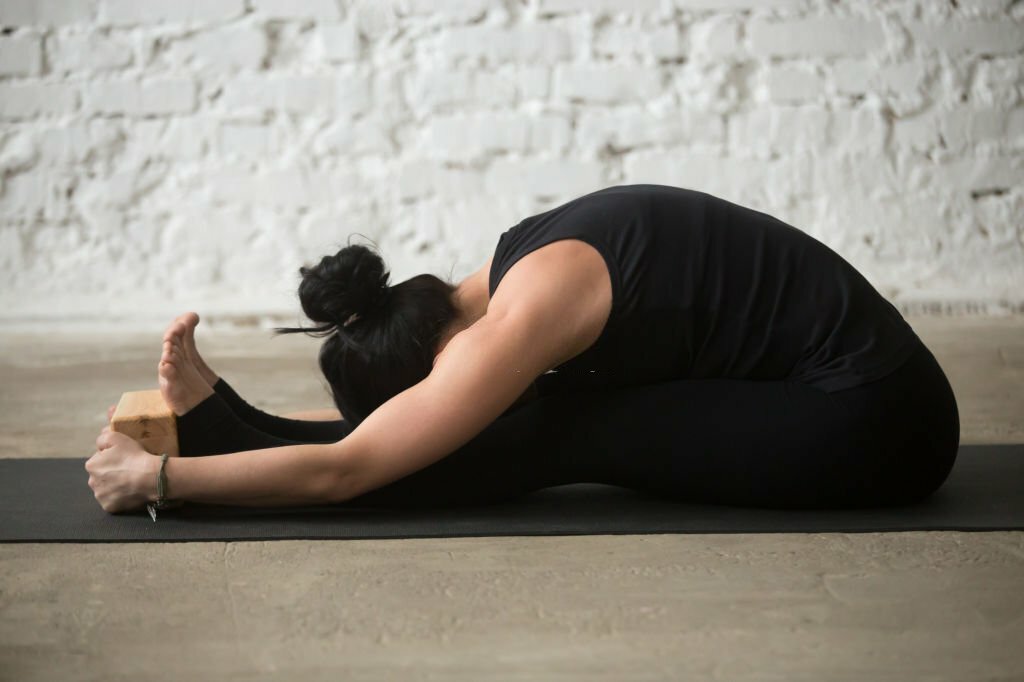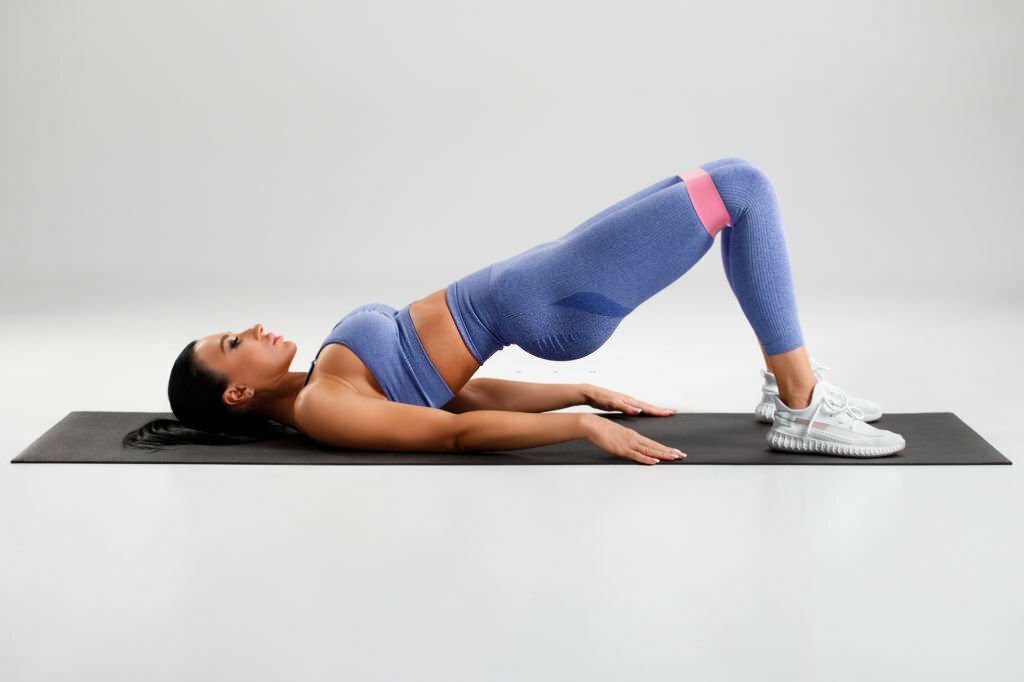Advertisements
Lower back pain is a common problem that affects people of all ages. Poor posture, muscle imbalances, and even underlying medical conditions can all contribute to it. Thankfully, there are effective stretches that can bring comfort and promote better back health. These stretches can be a beneficial addition to your routine whether you’re trying to prevent back pain or relieve existing discomfort. We’ll be looking at 13 stretches for lower back pain in this article.
Why Stretching is Important for Lower Back Pain
Stretching is important for lower back pain because it improves flexibility and decreases muscle tension. Lower back pain might be caused by tense muscles, which can be relieved by stretching. Furthermore, stretching on a regular basis might improve your overall mobility and posture.
13 Stretches for Lower Back Pain
1. Seated Forward Bend
This yoga stretch improves flexibility in the spine and increases blood circulation. It also stretches the hamstrings as well as the lower back
- Sit on the floor and extend your legs straight out in front of you.
- Extend your arms upward to stretch your spine.
- On an exhalation, hinge at the hips and fold forward, reaching your hands to your toes.
- Maintain a long spine and avoid rounding your back.
- Grab your shins or ankles if you can’t reach your toes.
- Hold for 5-10 seconds.
2. Cat-Cow Stretch
A great way to increase spinal flexibility and lessen lower back pain is to perform the Cat-Cow stretch.
- Start on your hands and knees, back flat, and hands under your shoulders.
- Inhale and arch your back, lifting your head and tailbone to form a “cow” pose.
- Exhale by rounding your back and tucking your chin to your chest in a “cat” pose.
- Continue for 30 seconds
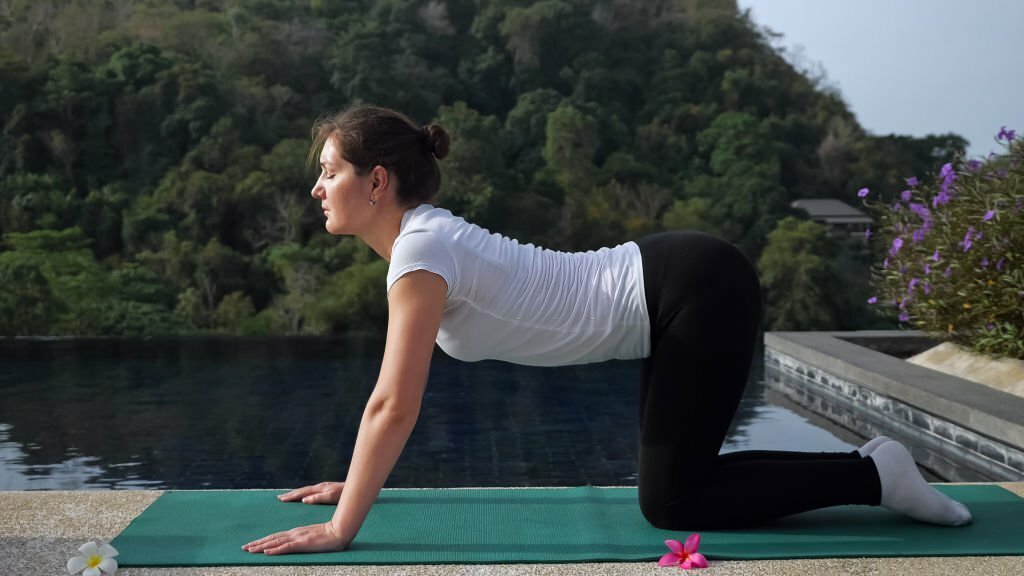
3. Child’s Pose
Advertisements
The Child’s Pose is a gentle stretch that focuses on your lower back, relieving stress and stiffness.
- Kneel on the floor, with hip-width apart, and your toes curled under.
- Sit back on your heels and fold forward with your forehead resting on the mat.
- Extend your arms in front of you or place them next to your body.
- Hold the position for 30 seconds.
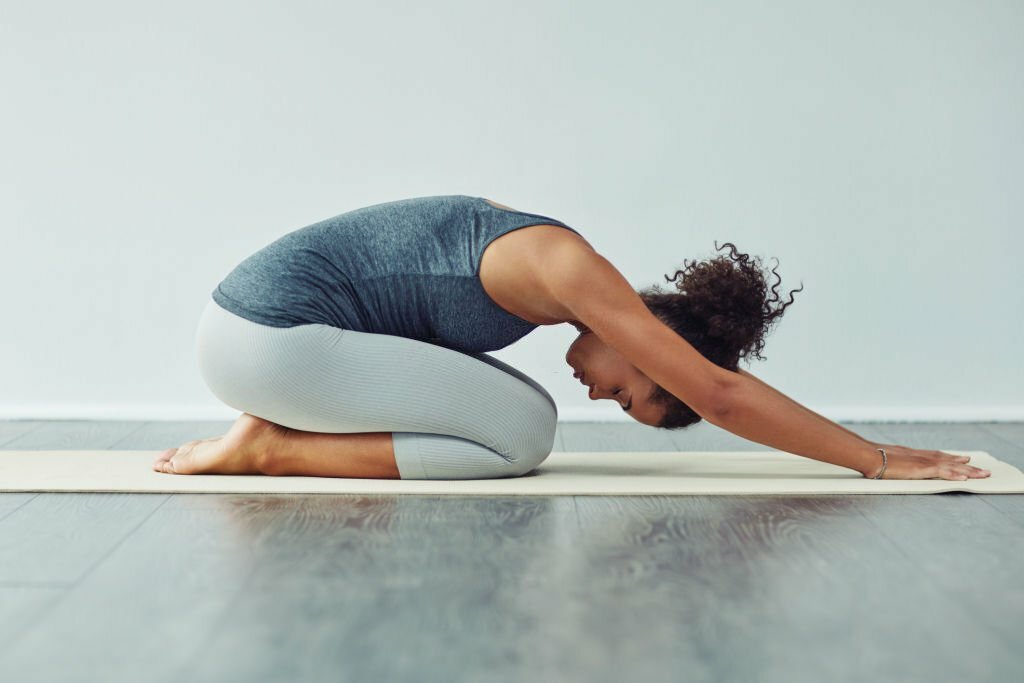
4. Cobra Pose
The Cobra pose is a great way to improve posture and strengthen the muscles in your lower back.
- Lie on your stomach with your legs straight back and your toes pointed.
- Place your hands flat on the floor beneath your shoulders, elbows tucked in close to your sides.
- Inhale and press your palms into the floor, lifting your chest off the mat.
- Maintain a close grip on your elbows and lift your navel off the floor.
- Make sure to extend your back and lift your head to the ceiling.
- Hold for 5-10 seconds.
- Exhale and carefully drop your chest back to the mat.
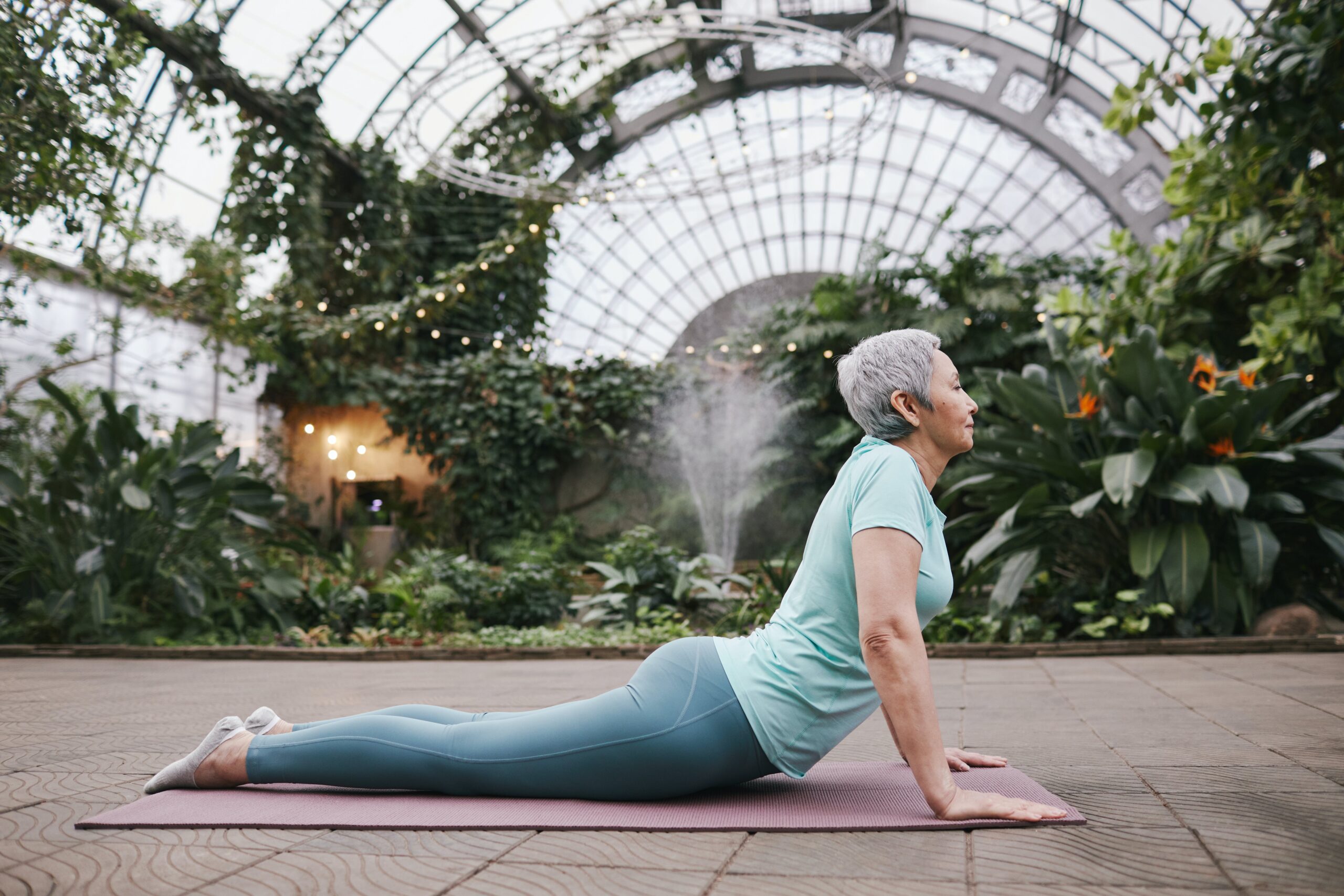
5. Knee-to-Chest Stretch
This stretch works to release and stretch tight muscles, which helps to relieve lower back pain.
- Lie down on your back, with your knees bent, and your feet flat on the floor.
- Bring one knee up to the chest and hug it with both hands.
- Hold for 30 seconds before repeating with the other leg.
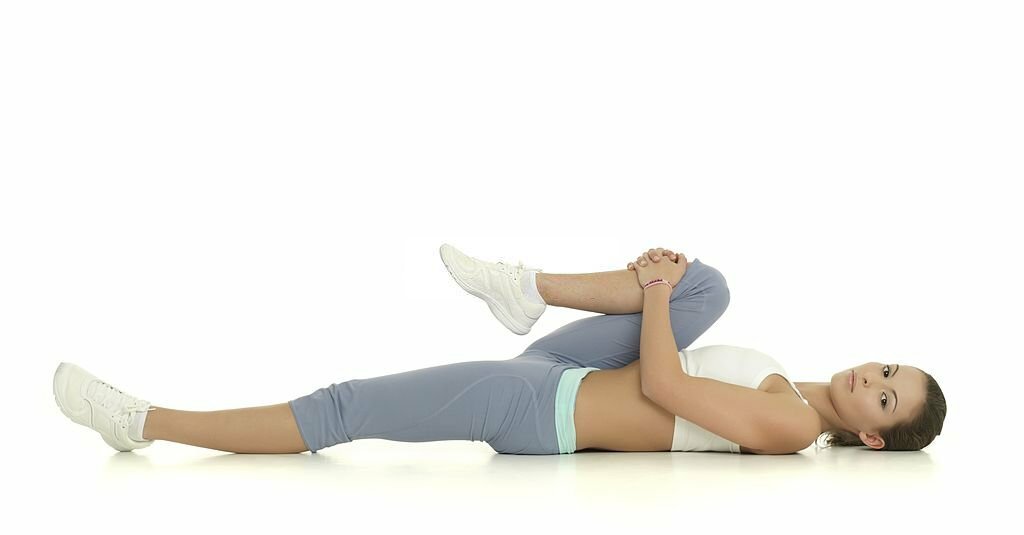
6. Standing Hamstring Stretch
Lower back pain might be made worse by hamstring tightness.
- While standing with your legs stretched in front of you.
- Reach for your toes while maintaining your back straight with your hands.
- Hold the position for 30 seconds.
Can Workout Delay Period?

7. Pelvic Tilts
Pelvic tilts are an excellent way to build stronger core and lower back muscles.
- Lie down on your back, with your knees bent, and your feet flat on the floor.
- Tighten your abdominal muscles and raise your pelvis, pressing your lower back into the floor.
- Hold for 5 seconds before repeating.
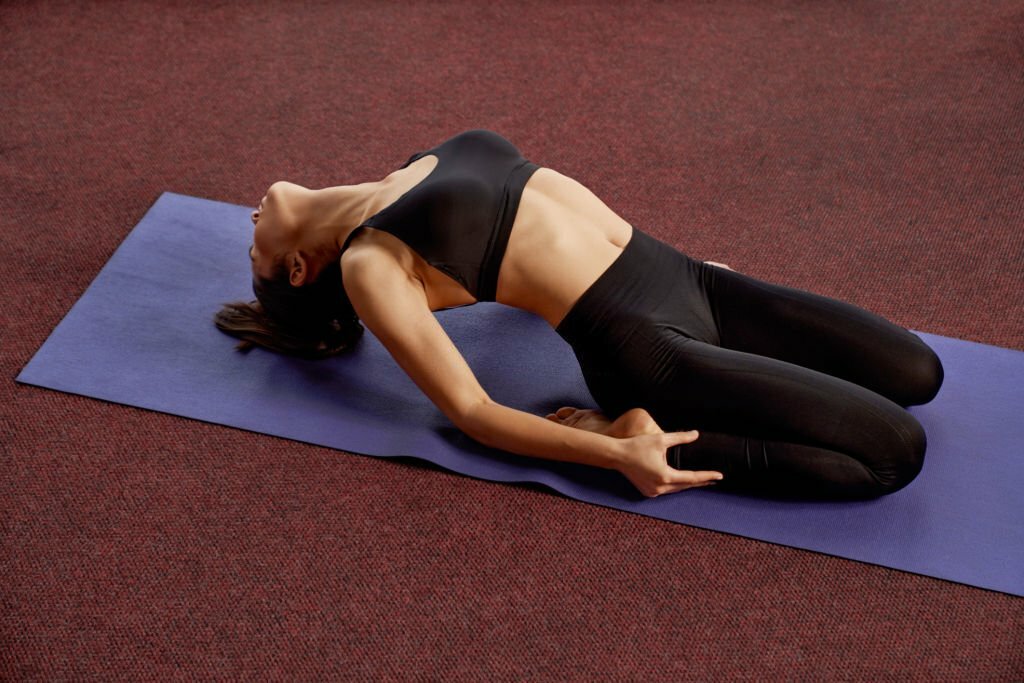
8. Spinal Twist
This stretch increases spine flexibility and reduces lower back pain.
- Bring one knee across your body while lying on your back,
- keeping your shoulders on the ground.
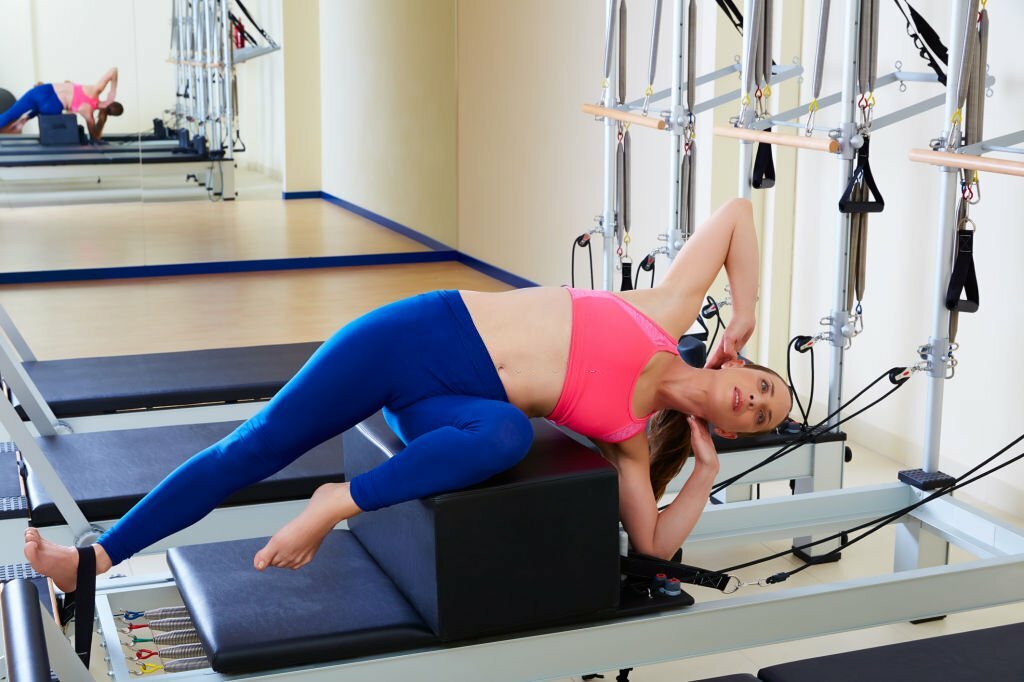
9. Quadriceps Stretch
Stretching your quadriceps can help ease lower back pain by improving your overall posture.
- Sit in a chair, back upright, and feet level on the floor.
- Bend one leg and place your footsole on the other thigh.
- Lean forward until the front of your thigh stretches.
- Hold for 30 seconds before switching legs and repeating.
10. Psoas Stretch
The psoas muscle is a muscle that links the lower spine to the thigh bone.
- Lie down on your back, with your knees bent, and your feet flat on the floor.
- Bring one knee up to your chest and hold it in place with your hands.
- Maintaining your other leg straight, lower it slowly to the floor until you feel a stretch at the front of your hip.
- Hold for 30 seconds before switching legs and repeating.
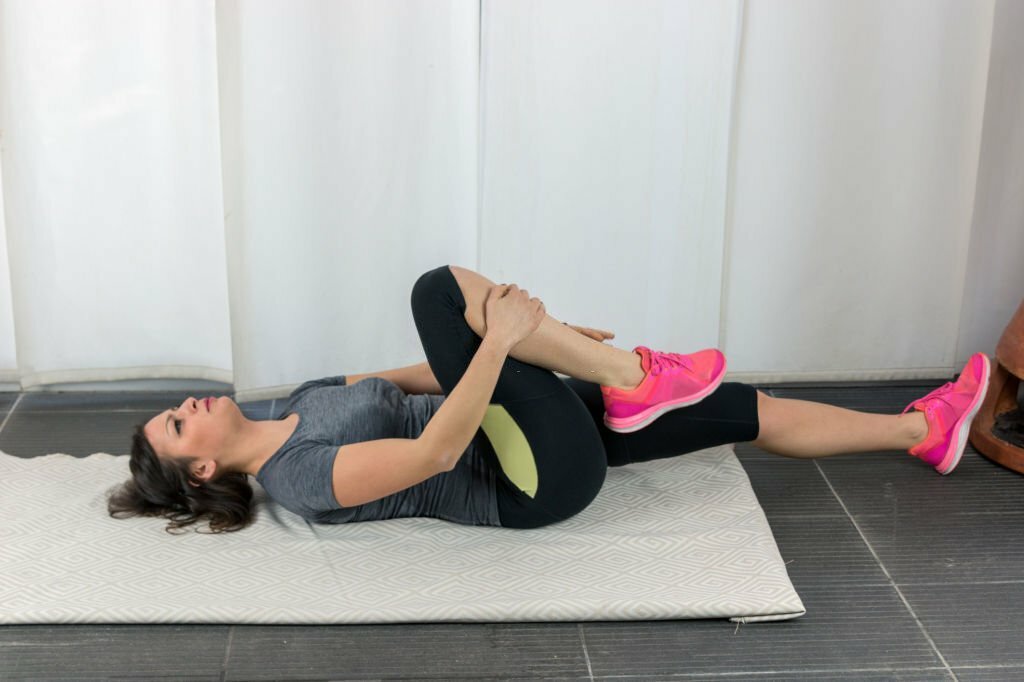
11. Bridge Pose
The bridge pose improves glute and lower back strength.
- Lie down on your back, with your knees bent, and your feet flat on the floor.
- Place your feet hip-width apart on the floor and press your feet into it.
- Form a straight line from your shoulders to your knees by lifting your hips off the floor.
- Hold for 20 seconds before relaxing.
Why Does My Lower Back Hurt After Working Out?
10 Reasons Why Breakfast is Not Important
12. Hip Flexor Stretch
Stretching your hip flexors can be helpful for relieving lower back pain because tight hip flexors could worsen the condition.
- Lie on your back, your right leg bent, and your foot flat on the floor.
- Straighten your left leg in front of you.
- Holding the back of your left thigh, draw your leg towards your chest until you feel a stretch at the front of your left hip.
- Hold for 30 seconds then repeat.

13. Wall Angels Stretch
The Wall Angels stretch is excellent for improving posture and relieving lower back pain.
- Position yourself with your back to the wall and your feet shoulder-width apart.
- Placing your palms flat against the wall at shoulder height and your elbows bent at a 90-degree angle, perform the following motions.
- Press your entire back, including your lower back, head, and shoulders, into the wall.
- Slide your hands up the wall slowly, keeping your elbows bent and your back flat against it.
- Continue moving your hands up the wall until they are fully overhead, producing a “W” shape with your arms.
- Return your hands to the beginning position by sliding them down the wall slowly.
Tips for Effective Stretching Routine
Warm up your muscles by performing light physical workouts.
To avoid overstretching, perform each stretch slowly and gently.
Take deep breaths and relax into each stretch.
Hold each stretch for at least 30 seconds.
Don’t overdo it; it should be slightly uncomfortable but not painful.
If you have chronic or severe lower back pain, please see your doctor.
Final Thoughts
Regular stretching exercises can help manage and possibly prevent lower back pain. By implementing these 13 stretches for lower back pain into your daily routine, you can improve your flexibility, relieve muscular tension, and ultimately find relief from lower back pain. If the issue persists, please see a doctor.
Frequently Asked Questions (FAQs)
Are these stretches suitable for everyone?
These stretches are generally safe for most people but consult with a healthcare provider if you have any medical conditions or concerns.
How often should I perform these stretches?
Aim for daily stretching, but listen to your body. If you experience discomfort, reduce the frequency and intensity.
Can stretching alone cure chronic lower back pain?
Stretching can help alleviate lower back pain, but it’s usually most effective when combined with other treatments and lifestyle changes.
Can pregnant women do these stretches?
Many of these stretches are safe for pregnant women, but it’s essential to consult with a prenatal fitness expert for tailored advice.
How long should I hold each stretch?
Holding each stretch for at least 30 seconds is a good starting point, but you can increase the duration as you become more flexible.
What stretches are good for lower back pain?
Several stretches can be beneficial for lower back pain, including the Child’s Pose, Cat-Cow Stretch, Cobra Pose, Knee-to-Chest Stretch, and the Standing Hamstring Stretch etc.
How do you stretch your lower back in bed?
The Knee-to-Chest Stretch is a simple and effective way to stretch your lower back before getting out of bed. Be sure to go slowly and not push your body too hard, especially in the morning when your muscles may be stiffer.
What happens when you stretch in bed?
Stretching in bed helps increase blood flow to your muscles, which can help reduce stiffness and discomfort.
Is it good to stretch after bed?
Stretching after bed can be a great way to kickstart your morning routine and promote overall well-being. Focusing on gentle, dynamic stretches like the Cat-Cow Stretch or the Knee-to-Chest Stretch can be particularly helpful in preparing your body for the day ahead.
